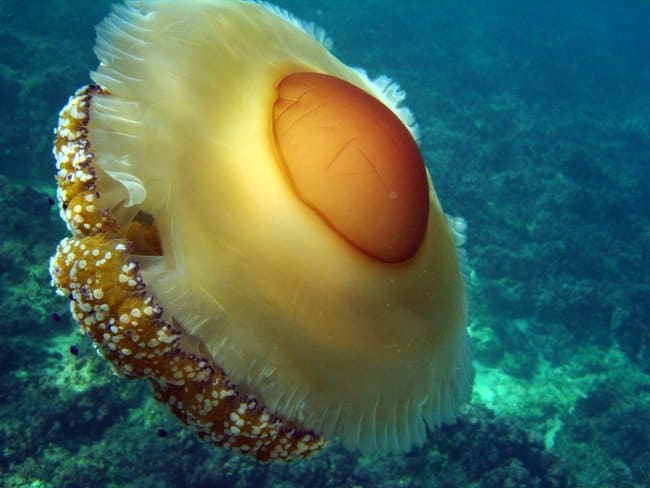Jellyfish for dinner?
It might sound like something out of a horror movie. Over the last decade, the numbers of jellyfish have been multiplying in oceans around the world. In the Mediterranean Sea only, the number seems to have quadrupled. Not very pleasant for swimmers and fish farms, explains Antonella Leone, an Italian scientist and member of the ‘GoJelly’ project. This EU project has been set up to find ways to turn this negative into a positive, ‘from pollution to solution.’
The project is researching ways jellyfish could benefit humans as fish feed, fertilizer and filtrations system for micro-plastics. Teams from around Europe have different tasks, but the Italian team has most likely the biggest challenge: how to valuate the use of the jellyfish biomass as human food Flavour profiles have been assessed, reactions of its flesh to heat and salt and potential for poisoning have been examined. ‘The most important thing will be making sure they don’t accumulate bacteria, heavy metals or pollution that could make them unsafe to eat,’ Leone says.
In China however, jellyfish has been brought to the table for hundreds, maybe thousand years. In Europe, this is still a bridge too far, but Antonella Leone predicts that around 2020 we, Western Europeans, also will appreciate jellyfish on our menu. Grilled, battered or cooked jellyfish for dinner, or maybe as jellyfish sushi. We need to get used to it, such a salty chewing gum in your mouth Leone: ‘They have an oyster-like texture and are different from the food we normally choose. But if people can open their minds to taste them, they can find very interesting flavours’. We can’t wait…
Bron: Norwegian Inflight magazine – Jellyfish for dinner – February 2018
Neem contact met ons op

